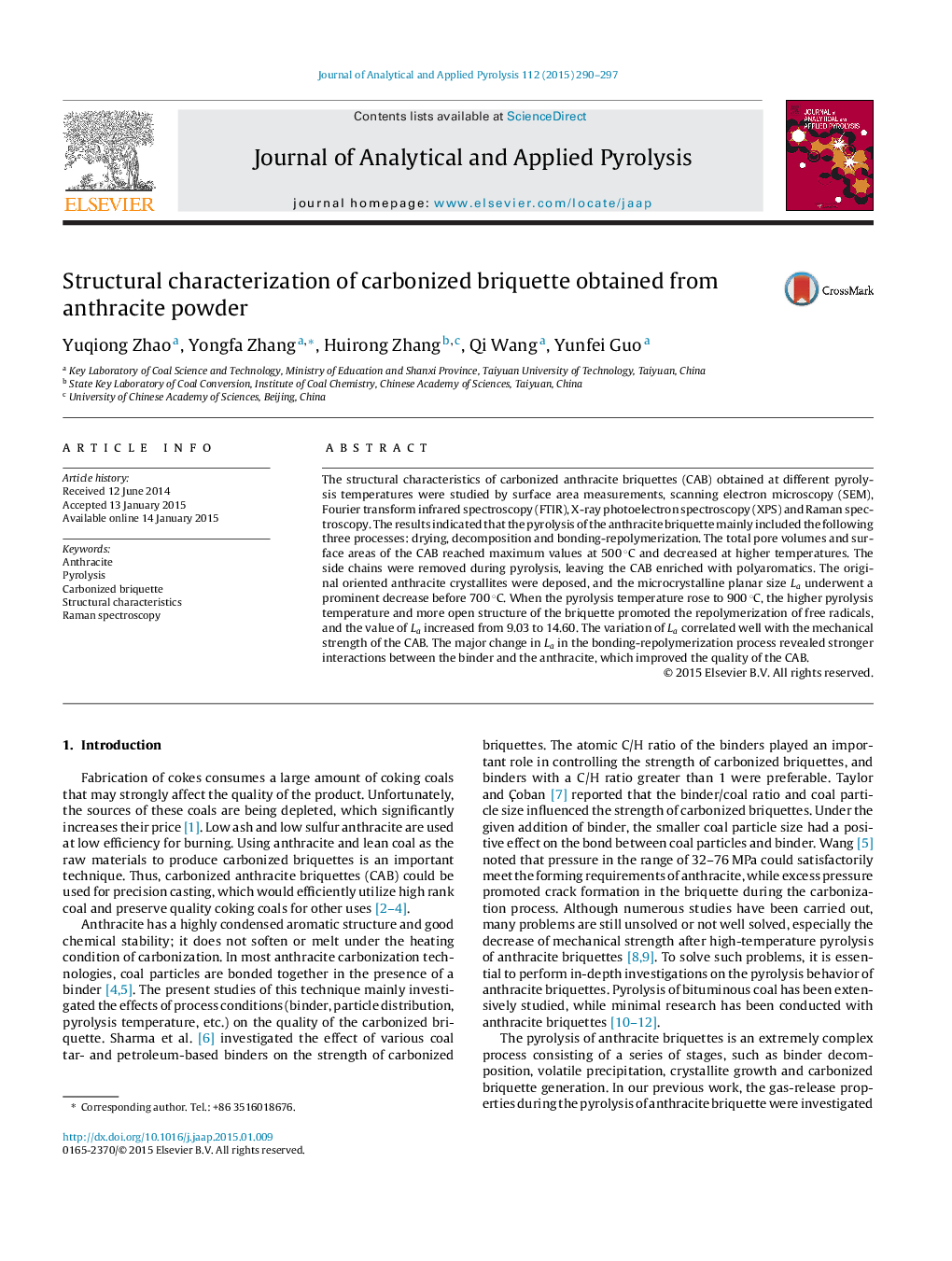| Article ID | Journal | Published Year | Pages | File Type |
|---|---|---|---|---|
| 1197245 | Journal of Analytical and Applied Pyrolysis | 2015 | 8 Pages |
•Self-developed carbonized anthracite briquette (CAB) used for foundry as object.•Structure of CAB was characterized by BET, SEM, FTIR, XPS and RAMAN.•Correlation between mechanical strength and La of CAB was established.•Functional groups and surface structure of CAB correlated well with La.•The La reached a minimum value at 500 °C and increased at higher temperature.
The structural characteristics of carbonized anthracite briquettes (CAB) obtained at different pyrolysis temperatures were studied by surface area measurements, scanning electron microscopy (SEM), Fourier transform infrared spectroscopy (FTIR), X-ray photoelectron spectroscopy (XPS) and Raman spectroscopy. The results indicated that the pyrolysis of the anthracite briquette mainly included the following three processes: drying, decomposition and bonding-repolymerization. The total pore volumes and surface areas of the CAB reached maximum values at 500 °C and decreased at higher temperatures. The side chains were removed during pyrolysis, leaving the CAB enriched with polyaromatics. The original oriented anthracite crystallites were deposed, and the microcrystalline planar size La underwent a prominent decrease before 700 °C. When the pyrolysis temperature rose to 900 °C, the higher pyrolysis temperature and more open structure of the briquette promoted the repolymerization of free radicals, and the value of La increased from 9.03 to 14.60. The variation of La correlated well with the mechanical strength of the CAB. The major change in La in the bonding-repolymerization process revealed stronger interactions between the binder and the anthracite, which improved the quality of the CAB.
